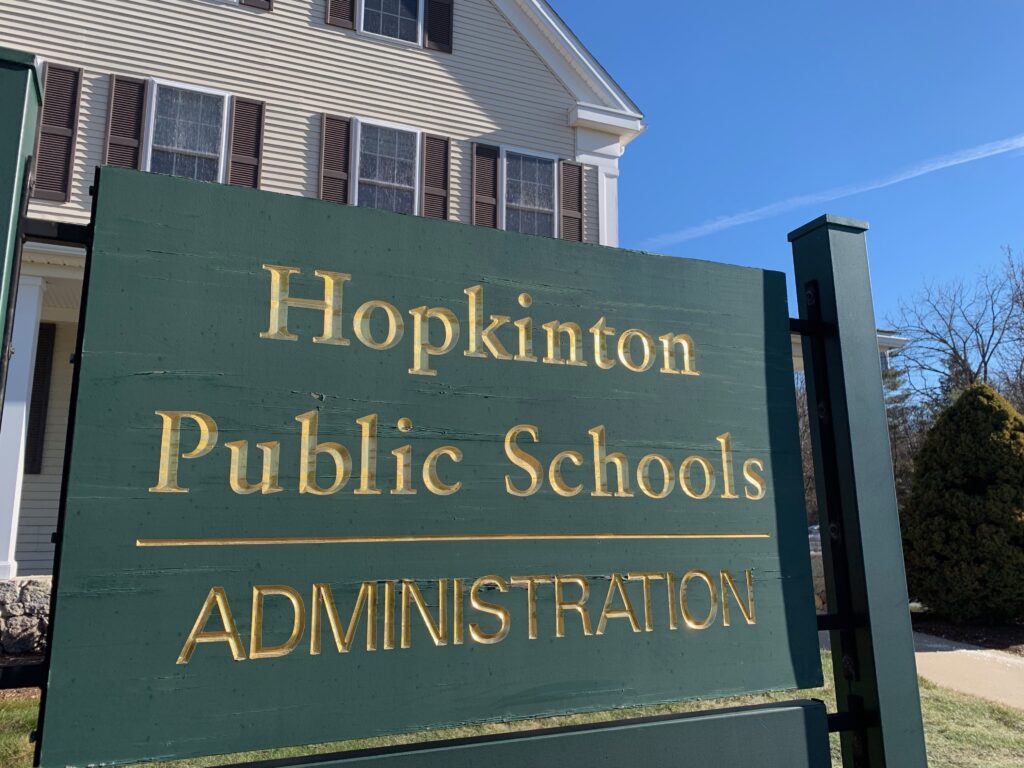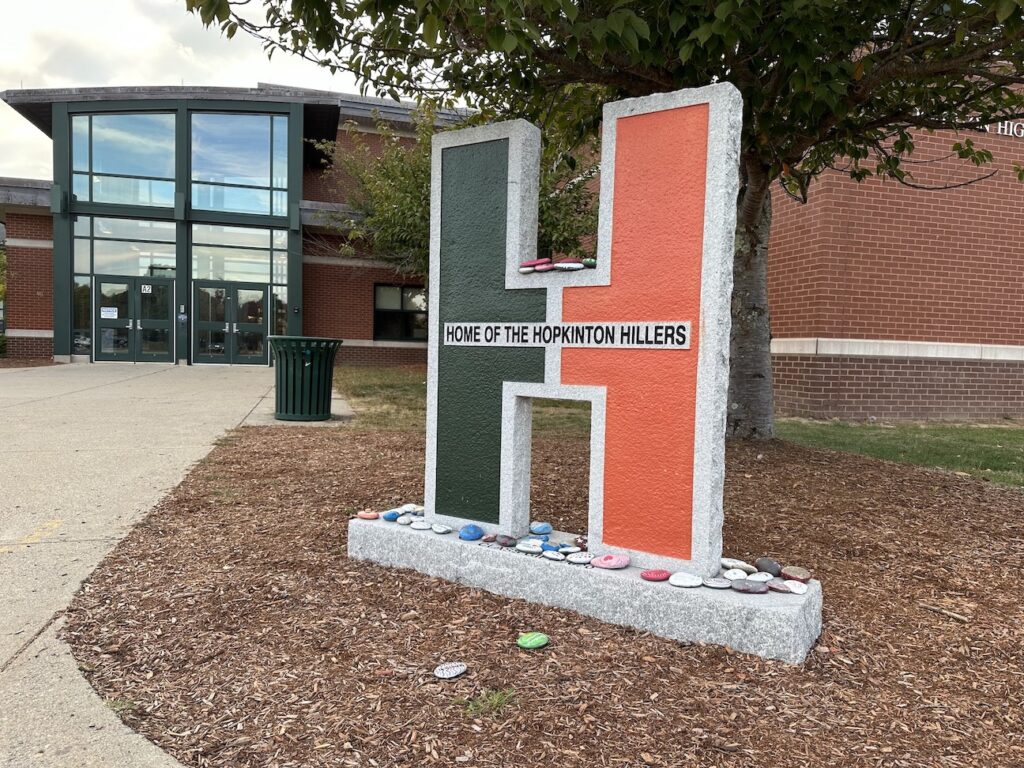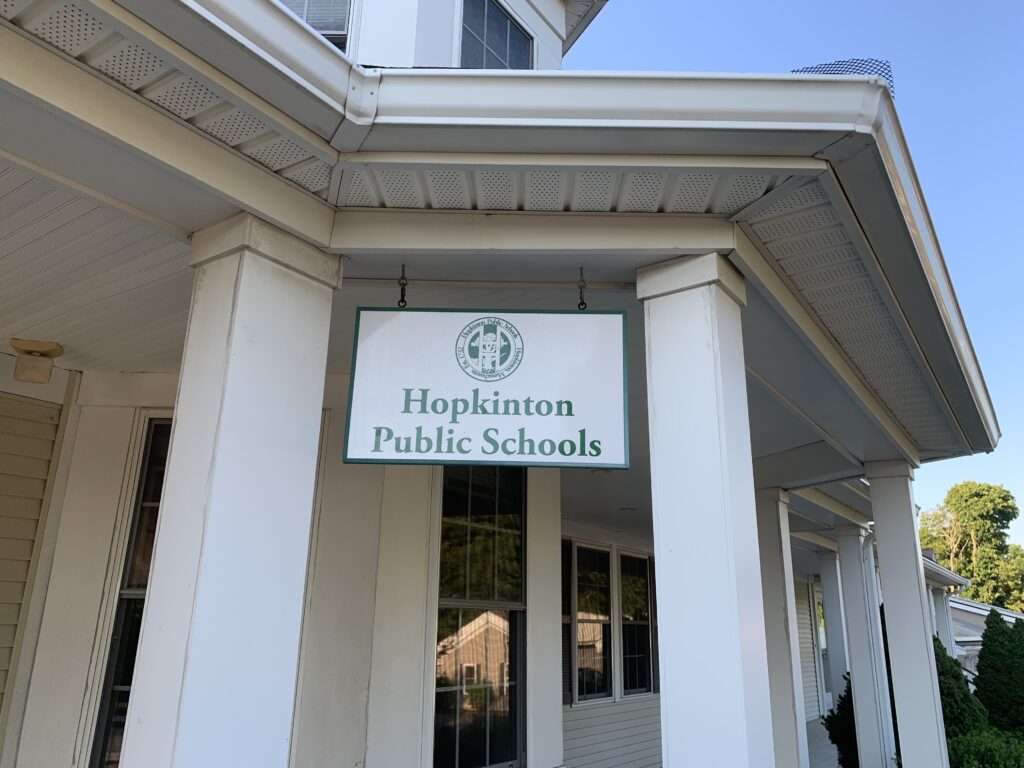One of the pending decisions by the School Committee is whether to have a new Elmwood School cover Grades 2-3 or Grades 2-4.
A presentation on Thursday included diagrams showing configurations until 2032. Projected enrollment for a two-grade facility is 774 students, while a building housing three grades would accommodate 1,176 pupils.
Superintendent Carol Cavanaugh explained that many different configurations exist across the country, with the most common being K-5, 6-8 and 9-12.
Consultants Dove, Pearson and Hooper noted that any local decisions on the topic must consider transportation, size of school, goals, financial accountability and geography.
The superintendent said that no matter what configuration is chosen, the number of transitions between buildings will not change.
The estimated reimbursement by the Massachusetts School Building Authority (MSBA) is 46 percent. However, Cavanaugh said that with caps and exclusions, the true amount could be lower than 30 percent on a $100 million project.
She said that after Elmwood is renovated or replaced, Hopkins School as it exists today does not have the capacity, square footage and number of classes to house all the projected students. She said a self-funded project to add classrooms and larger common areas would cost $40 million.
Cavanaugh said substantial construction, also self-funded, would have to take place at the middle and high schools to accommodate the growth of 486 students.
The superintendent said that one advantage of the Grade 2-4 option would be the MSBA would share in the cost of an additional grade level.
A plan would be to remove Grade 4 from Hopkins and allow sixth-graders to join fifth-graders in a “lower middle school” setup.
“Grades 2-3-4 presents a better fiscal opportunity than a 2-3 school for the community,” Cavanaugh said.
She noted that a site on Hayden Rowe Street would allow ample queuing lanes for parent and bus transportation. Studies show that it could mitigate the town’s traffic concerns.
Having Marathon and a new school on adjacent parcels would allow 31 buses to transport K-4 students, shortening the bus routes in distance and time, she said.
Currently, there are two fleets, one for Elmwood and one Hopkins/Marathon, that have similar routes.
“Redundancy is costly and challenging for students on longer routes,” the superintendent said.
Having K-4 on the same schedule for specialists would be another advantage. She said architecturally, the building would be designed to use a “learning neighborhood” model so kids ages 7-10 can feel like part of a smaller, school community.
Some other pluses of having sixth-graders included in a “lower middle school,” at Hopkins include giving them an opportunity for leadership roles, separating them from peer influence of eighth-graders and more access to play space.
Ultimately, Cavanaugh said, the community has to decide what is right for Hopkinton.
Budget presentations continue
In other business, three more building principals and the superintendent outlined their fiscal year 2024 budget proposals.
Marathon Principal Lauren Dubeau noted that the $4,464,600 budget request represents a 6.6 percent increase and reflects an additional classroom teacher request ($72,053). A corresponding .1 increase to a position ($26,777) would cover physical education, health, art and music associated with that additional classroom.
Another personnel request of $24,823 would be for a general education paraprofessional to support the first grade. Currently, there is a 1:100 ratio, with three paraprofessionals for 14 classes.
Dubeau said on the expenses side, Marathon has depleted supplies that were not used during the pandemic, and that budget totals $59,822.
She said the projected enrollment is 569 students in kindergarten and Grade 1.
Principal Anne Carver spoke about Elmwood School, noting a projected enrollment of 622. She said she was not seeking additional staffing, and expenses are consistent with last year.
At Hopkins School, Principal Vanessa Bilello cited an enrollment of 642 and projected numbers at 685. She said average class sizes are 23.4 in Grade 4 and 22.3 in Grade 5, and an additional two classrooms are anticipated.
Budget requests included 3.4 positions at $210,215. Professional staff (2.4) cost would be $172,927 while additions in related arts, wellness, library and general music would reflect the two additional classrooms’ needs in those disciplines.
Personnel additions would also include 1.0 paraprofessional and 1.0 math tutor.
She said expenses were up 29 percent for items like furniture, supplies, book shelves, etc. to set up the new classrooms.
Finally, the superintendent described a 20 percent ($808,386) increase, with salaries up by 30.6 percent, no new personnel added and expenses up by 13.8 percent. Cavanaugh said the new transportation contract and one new bus contributes to that hike, although some of the busing costs are offset by fees.
Cavanaugh said about 82 percent of the students — 3.342 students — take a bus to school.



















0 Comments